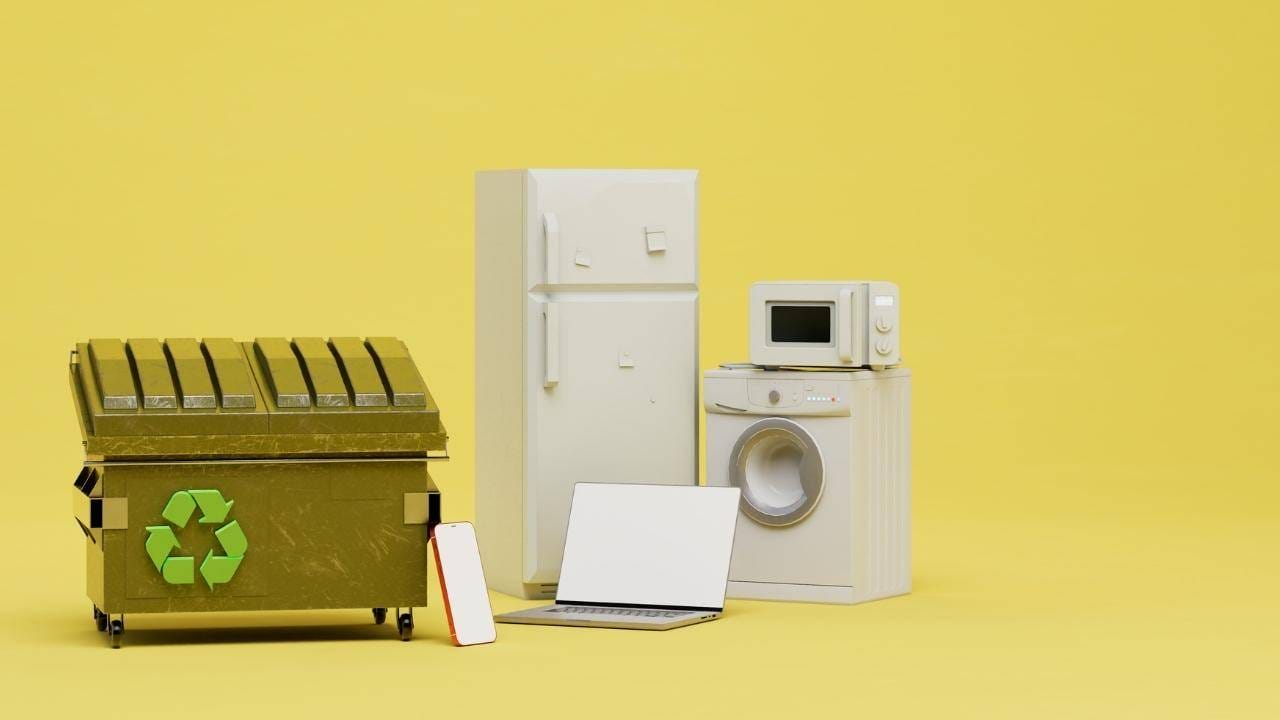Every year, the US leads the world by discarding 50 million tons of electronic waste, including household appliances. Alarmingly, only 12.5% of this e-waste is recycled.
Why does this matter? Most modern appliances contain harmful pollutants, like arsenic, lead, or cadmium, that don’t break down, threatening our environment. Recycling them is not just important—it’s essential.
Wondering about recycling your old appliances? This quick guide covers how, where, and which ones you can recycle, giving you all the info you need to help protect the planet.
Why Should You Take Appliance Recycling Seriously?
Appliance recycling is important because it’s the only environmentally-friendly way to dispose of broken or unused appliances. There’s the obvious scrap metal in small and large appliances that can be reused.
And then, there are hazardous materials, especially old appliances, that can pose a serious threat to the environment.
Let’s take a closer look.
Protect Our Environment
Research has shown that recycling metal from all household appliances can cut emissions by between 300 and 500 million tons. What is more, using scrap metal instead of “new” ore reduces mining waste by 97%.
Those are staggering amounts of completely unnecessary waste that every household can avoid by simply bringing old devices to an appliance recycling program.
Also, Energy Information Association (EIA) data shows that over 9 million refrigerators/freezers and 6 million window room air conditioners are disposed of each year.

And unless these large and small appliances are recycled in a safe way, the liquid refrigerant in them, like Freon, can leak out into the atmosphere and contribute to the depletion of the ozone layer.
In fact, as an HFC (hydrofluorocarbon), Freon’s global warming potential is 90 and 12,000 times more potent than carbon dioxide.
Reduce Your Energy Bill
Manufacturers that meet rigorous energy-efficiency standards mark their products with the Energy Star label. According to the EPA, Energy Star appliances can save 30% on energy costs.
And that saving is very noticeable on your energy bill, with some estimates showing a $450 saving on the energy bill for a typical household in the U.S.
Aging water heaters are among the most notorious energy consumers, and many homes still have a very old appliance providing their hot water supplies.
If all residential water heaters in the U.S. were Energy Star labeled, the energy savings would amount to $13.4 billion a year.
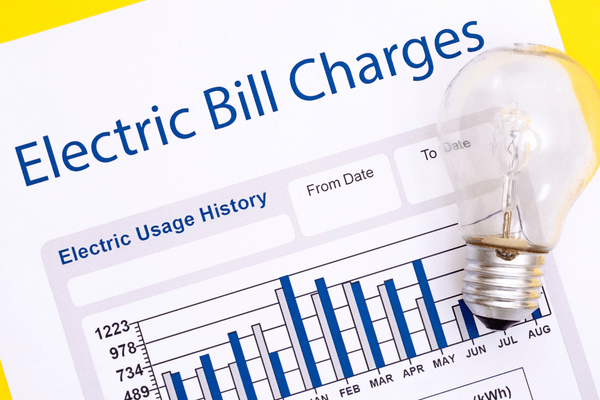
By disposing of old water heaters through responsible appliance recycling programs, you can reduce your energy consumption and shave a few dollars off your energy bill every month.
And when you add up all the large and small appliances, then your energy efficiency can increase in a very meaningful way.
Comply With The Law
There are several disposal bans and mandatory recycling laws in the United States. In California, for example, “white goods” or household appliances are banned from all types of listed disposal facilities.
You can find detailed laws and regulations related to disposal bans and mandatory recycling at California’s Department of Resources Recycling and Recovery (CalRecycle) website here.

And every state has some form of law that restrict what you can and can’t do with an old appliance. Ultimately, these laws are all designed to ensure that more people start recycling appliances rather than having them end up at a landfill site.
Earn Money When Your Recycled Appliances
You can sell large appliances with metal shells and electric motors such as room air conditioners, dishwashers, and washing machines for scrap metal.
And if an appliance is in working condition, you can sell it online. There are always people who’d rather pay a fraction of the price for working items than buy a new one. Not everyone is in a position to spend a lot of money on new appliances.

There are also some who are willing to take vintage appliances off your hands. For example, old school gamers are always looking for old CRT TVs to pair with their 80s and 90s gaming consoles.
After recycling your broken or unused appliances, you’d most probably want to replace them with new ones that have higher energy efficiency and are way more eco-friendly. The best place you can start is in the kitchen, as that’s where most large appliances will be.
What Appliances Can Be Recycled?
Most people tend to do the right thing when it comes to large appliances. Mainly because they are large and bulky, making them difficult to get rid of in the first place. It can actually be easier to use one of the recycling options available.
When it comes to recycling appliances, it’s far more common for small appliances to end up in the trash and at a landfill site where toxic materials can leak out.
Let me show you a few appliances that go well beyond your typical refrigerator or freezer.
- Air conditioners
- Air fryers and deep fryers
- Dishwashers
- Clothes dryers
- Coffee makers and grinders
- Convection ovens
- Curling irons
- Electric skillets
- Fans
- Food processors
- Freezers
- Garbage disposal units
- Heaters
- Humidifiers
- Ice makers
- Juicers
- Microwave ovens
- Range ovens
- Stoves
- Refrigerators
- Scanners and printers
- Toasters
- TV sets
- Vacuum cleaners
- Video game consoles
- Washers and dryers
The way you want to approach the decision of whether something is suitable for recycling is to consider whether it has any cables or batteries. If there are electronic parts, then they should be recycled.
Whether that’s a room air conditioner, full-size refrigerator or freezer, or a simple clothes iron really shouldn’t matter.
5 Methods To Recycle Any Home Appliance
When it comes to recycling appliances, there are five different options that you need to consider.
1 – Donate A Working Appliance
Before you consider an appliance recycling program, check whether your old device is still working or not. Maybe you’re getting rid of it because it’s just a bit old-fashioned or because you’re making energy efficiency upgrades to your home.
But if your appliance is still in good working order, then there are probably many people that could still benefit from using it. Not everyone can afford the latest energy-saving appliances, and there is a significant environmental benefit from extending the life of appliances.

One option is to contact some local charities and community organizations like schools, homeless support centers, non-profit organizations, the Salvation Army, and Goodwill.
If you need a directory of options, then Donation Town is a great resource to link up with different organizations.
In some cases, these organizations might even come to your home to verify that an appliance like a refrigerator or freezer is still working and then handle the pick up for free or for a small fee.
The bottom line is that if an appliance is still working, then try to extend its life by giving it to a worthy cause.
2 – Use Retailer Recycling Options
Most major electronics retailers now have an active appliance recycling program. Companies like Walmart, Costco, Best Buy, and Staples have a program that allows you to drop old appliances off at their stores.
In some cases, it’s only free if you bought the appliance there. And other companies will take in an old appliance for free when you buy a new one the same day.
Here are some examples you might want to consider.
- Walmart: This company has created a completely unique and automated approach to recycling with what they call ecoATM. You can bring your old appliances to one of these machines and either hand them over for free or turn them into cash and coupons to use in-store.
- Staples: Every Staples store has a recycling point where you can bring your old electronics and appliances. They do have some restrictions on very large appliances, so make sure you contact them before you drop off a refrigerator or freezer.
- Best Buy: This is one of the most popular places for all types of appliances. If you’re planning to make upgrades for energy savings, they’ll have a great selection available, and you can bring your old recycling on the same trip.
3 – Check For Manufacturer Recycling Programs
Between consumer demand and legislation, most manufacturers now offer a direct and indirect appliance recycling program. Some of these big manufacturers offer a drop-off service at certain retailers, while others have a mail-in service that involves registering on third-party websites.
For large appliances, this can often be difficult because manufacturers don’t always offer a free shipping service.
The best thing you can do is check out the recycling information for a manufacturer and see how their programs work.
Here are a few examples:
- LG has partnered with nationwide recycling service providers, and all of their old appliances can be brought to designated sites. Whether it’s an old T.V. refrigerator or freezer, this is a good service with many drop-off points.
- G.E. also has a dedicated recycling program with drop-off sites around the country. Whether it’s a room air conditioner, refrigerator, or freezer, you’ll be able to responsibly get rid of your old G.E. appliances this way.
If you have appliances from other manufacturers, then contact them directly and see what kind of service they offer.
4 – Sell For Scrap
One of the options you have when you recycle appliances is to try and get some money for it, especially when you’re dealing with large appliances.
For example, if you have an old washing machine, dryer, refrigerator, or freezer, there’s going to be a lot of metal like steel in those machines. And apart from precious metals like gold in the small electronic parts, this steel and aluminum can turn into a payday.
What you’ll need to do is find a scrap metal recycler near you and contact them to give you their rates for dropping them off. You’ll likely get a quote per pound, and you will need to get your old machines to their location.
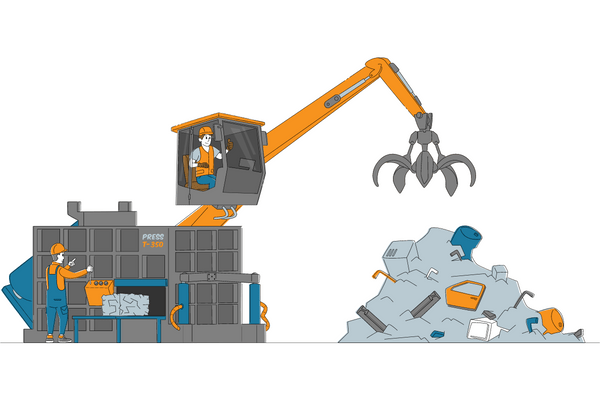
Current rates for scrap metal start at $0.40 per lb of steel and $3.54 per lb of copper. You’ll be surprised how quickly those add up, especially when you have multiple machines.
Just work out how much it will bring and consider that you might have to drive further than to a free drop-off point.
It’s not worth the effort if it’s going to cost a lot in fuel unless you have a large volume of devices to drop off.
5 – Professional Recycling Centers
Using a certified and licensed appliance recycling program is one of the best and safest ways to deal with small and large appliances. There are many locally based and national service providers that will deal with all types of appliances.
You can start by checking Yelp or just doing a Google maps search for recycling centers in your area. You’ll more than likely find either a designated electronics recycling provider or a municipal waste site that will accept appliances.
Once you’ve found a service provider near you, give them a call to find out what appliances they do and don’t accept. Also, ask if they offer a pick-up service, which some of them might do if you have multiple old machines.
You just have to be careful that you choose a company that has a licensed recycling program, as there are still some dodgy companies out there that might not have the best intentions for all the toxic materials in an old refrigerator or freezer.
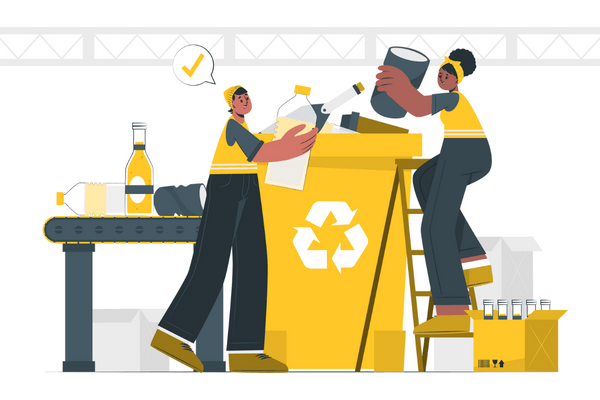
How To Prepare Your Appliances for Recycling
The best thing you can do when it comes to recycling appliances is to follow a few health and safety measures and also be aware of some legal issues, especially with an old refrigerator or freezer.
Any appliance that has coolant gasses or liquids requires special attention. While these might not be harmful to your health, they are harmful to the environment, and only certified specialists are allowed to remove gasses like Freon.
That’s why breaking down a refrigerator or freezer is not a good idea unless you have an EPA certification. If not, you would be leaving yourself open to severe federal fines.
So, for large appliances like a refrigerator or freezer, and even a room air conditioner, stay away from anything that contains gas and liquid and let licensed specialists handle them.
Next, if you have a working appliance like an old fridge, remove any food and defrost the freezer compartment before you move it. Then unplug it to allow the coolants to get to room temperature.
If you’re leaving a washing machine, dryer, refrigerator, or freezer curbside for pick-up, then consider either strapping the doors shut or removing the doors altogether.
Also, for dishwashers, dryers, and washing machines, make sure you fully drain the water before you start moving them.
An example where this could lead to a big mess is if you have a broken washing machine where the water didn’t fully drain from the drum.
If you start moving it before manually draining it, then you could end up with water dripping all over your home.
And finally, don’t try to be a superhero and move a large and heavy appliance by yourself. Get a friend to help and avoid hurting your back.
How To Recycle A Refrigerator Or Freezer
Recycling large appliances like a refrigerator or freezer takes a bit of planning.
That planning should start before you buy the new devices.
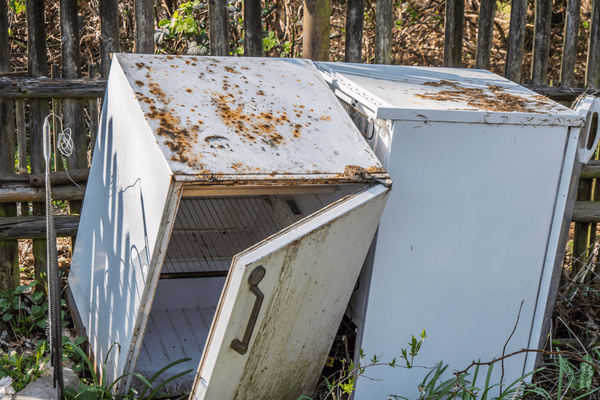
Step 1: Plan Where To Bring You Appliance
The first thing you should do is check with retailers whether they have a drop-off or pick-up service when you buy a new appliance.
Some retailers will deliver a large appliance like a refrigerator or freezer to your door and at the same time collect the old ones while they are there. That will save you a lot of effort to recycle appliances in a responsible way.
Alternatively, look for a recycling center that offers a pick-up service. You might have to pay for this, but it can be worth a few dollars not having to pull, drag, and lift heavy refrigerators or a large room air conditioner.
Step 2: Prepare The Refrigerator And Freezer
Ideally, get all of the food out of your old appliances and use them up or store them somewhere else. It’s best to unplug refrigerators and freezers before they are moved to allow the coolant to get to room temperature.
This makes it safer to move them and can avoid injuries and leaks.
Step 3: Consider Removing Doors
It can often be easier to move large appliances, especially refrigerators when the doors are removed. It takes quite a bit of the weight off and allows whoever is moving it to handle it a bit easier.
Step 4: Always Transport Upright
The temptation with a refrigerator and freezer is to lay it on its side in the trunk or the flat deck of a truck. However, that could cause the coolant gas and/or liquid to leak out and could leave you open to a severe fine.
If you don’t have a way to transport a refrigerator fully upright, then you probably need some help with a professional pick-up.
How To Recycle Washing Machines And Dryers
Washing machines and dryers would also be classed as large appliances. And while they don’t have ozone-depleting or greenhouse gasses, you still need to be careful how you handle them for recycling.
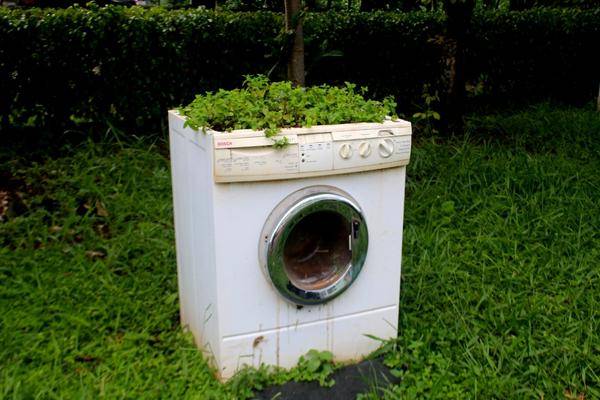
Here are the steps you should follow to recycle them in a responsible way.
Step 1: Plan Your Recycling Method
If your old machine has broken down, or if you simply want to save energy with a modern one, you should consider calling some electronics stores around you to see if they will take your old one.
Some retailers even offer a coupon and discount when you drop off an old washer or dryer.
This can also save you a trip as you can simply load up the old machine on the way to the store and have the space available to install the new one when you get back.
Alternatively, find some recycling locations and get rid of the old one before you bring a new machine into the house.
Step 2: Drain All The Water
One of the common reasons people need to replace their washing machine is because of an internal fault that can also involve the pumps. When this happens, there can be a lot of water left inside the machine.
For safety reasons and to avoid a big mess, use the manual drain pipe to remove all the water.
This is usually at the front of the machine, but you can check the safety and instruction manual for details.
Step 3: Disconnect The Machines
Carefully disconnect the water pipes and vents for your washing machine and dryer before you completely pull the machines away from the wall.
These should easily unscrew, and you want to pay attention to the connection if you’re going to reconnect the new machine yourself.
Step 4: Safely Transport Them
If you don’t have enough space in your car to safely transport the appliances, then don’t be tempted to strap them to the roof or have them hanging halfway out of the trunk.
Instead, schedule a pick-up from a recycling company or check if the retailer you’re buying from offers delivery service with a pick-up for the old appliance.
You don’t want to end up causing an accident.
How To Recycle Microwave Ovens
You should also recycle appliances that are smaller, like microwave ovens. These contain a lot of electronic components that shouldn’t end up in a landfill.
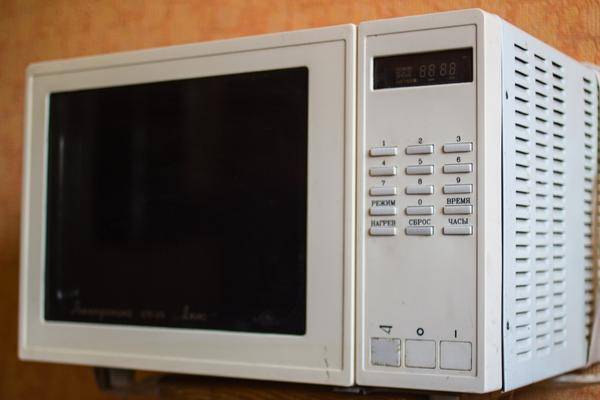
Step 1: Plan Your Recycling
The good thing with small appliances is that you can easily plan your recycling without having to worry about how you’re going to disconnect, carry, and transport it.
But you can still save yourself time and effort by planning ahead.
If you’re heading to an electronics store to buy a modern microwave that will save energy, then bring the old one with you on the way. Most stores have a drop-off recycling program.
And if the store doesn’t offer such a service, then simply look up a local recycling center that might be on the way to avoid an extra trip.
Step 2: Don’t Take It Apart
Some people might be tempted to take apart a microwave oven. But there are some safety concerns with all the electronic equipment inside. It’s better to leave the dismantling to the professionals.
Step 3: Drop Off Your Old Microwave
Once you know the ideal locations to drop off your old microwave, simply load it up in your car. Unless you have an industrial kitchen-sized microwave, these tend to be small and lightweight machines that you shouldn’t need help with to move.
How To Recycle Dishwashers
Dishwashers are also in the large appliances category, where you need to be a bit more careful with how they are recycled. Similar to washing machines, you’ll want to carefully plan your process for replacing one.
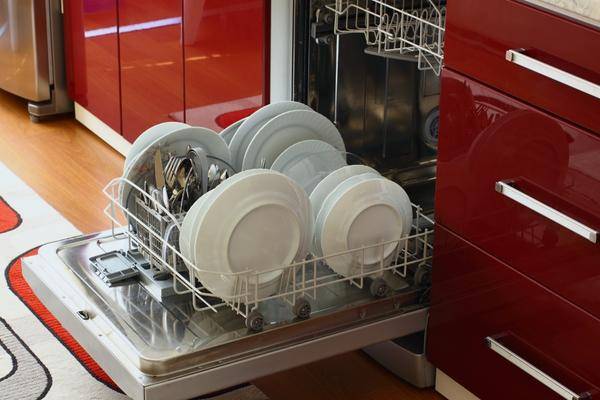
Step 1: Plan Ahead
Let’s say your old dishwasher has broken down and you need to replace it in a hurry. What you want to do first is call a couple of local electronic stores to find out if they have a recycling exchange program.
Some offer discounts when you drop off an appliance. And others will allow you to schedule a free -pick-up when the store delivers your new dishwasher.
Step 2: Drain Excess Water
Similar to washing machines, it’s possible for pumps to fail in a dishwasher, and you could be left with a faulty machine that still has a lot of water in it.
Don’t try to move the machine with that water still inside. Contact the manufacturer or check the instructions for a manual water outlet. In a worst-case scenario, you’ll have to try and use towels to mop up the excess.
Step 3: Drop Off At A Recycling Point
Disconnect the dishwasher from the water inlet and drain pipe and also pull the socket. Then carefully remove the machine, ideally with the help of a second person, as they can be quite heavy.
Carefully transport it in a large enough trunk or van to ensure it’s stable and secure while you’re in traffic. Alternatively, schedule a pick-up with a recycling service provider to save you a lot of hassle and stress.
How To Recycle Room A Room Air Conditioner
When it comes to room air conditioners, you have to be as careful in your planning as they contain environmentally harmful gas.
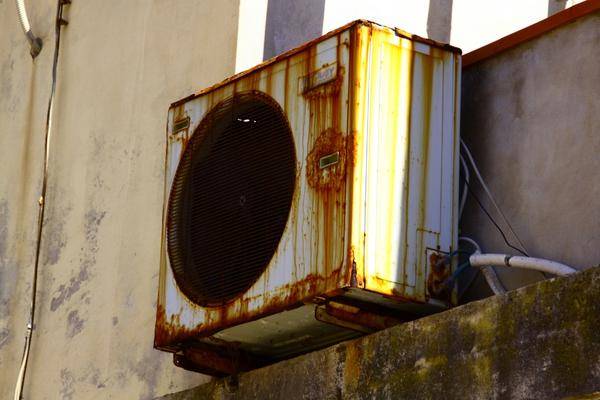
Step 1: Plan Your Recycling Process
If you’re buying a small portable air conditioner, then contact the store before you head in to find out if they have a free drop-off point for old units. If this is the case, then plan ahead and bring your old machine with you on the same trip.
Alternatively, you can contact a few recycling centers and municipal waste sites to see if you can drop it off there on the way to the store and save yourself a trip.
Step 2: Disconnect The Room Air Conditioner
Small stand-alone room air conditioners are easy to simply disconnect from the mains’ power. But if you have a unit with an extraction vent, then you might need to call a technician to fully and safely disconnect it.
It’s important that you don’t force any part off as this could lead to leaking coolants.
Also, make sure you don’t just throw the old unit in a corner somewhere until you replace it, as any damage could cause a leak.
Step 3: Carefully Transport Room Air Conditioners
Even if it’s still a working appliance, an old room air conditioner could be leaking some of the cooling gas and liquid. That’s why you should only transport it standing up straight the way it would be in your home.
Especially with a leak in the system, laying it on its side could make the leak worse.
How to Recycle Stoves
Large appliances like stoves and ovens contain a lot of scrap metal, and you might find these are the most likely appliances that you can turn into money.
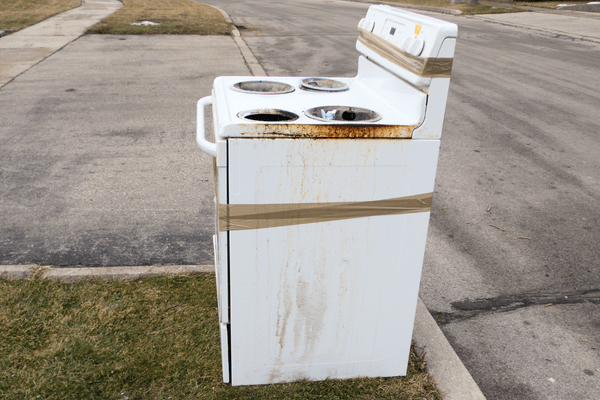
Step 1: Plan Your Recycling Trip
So, if you have a combination of electric and gas oven and stove, then you probably need to schedule a technician to come and safely disconnect it.
You don’t want to be messing with gas connections for obvious safety reasons.
It’s most likely that you’ll have a new stove and oven delivered as they are heavy and awkward to transport. What I would suggest before choosing a new stove is to talk to assistants in a few different stores to see if they offer a drop-off and pick-up service. This could save you a lot of hassle.
Step 2: Safely Disconnect The Stove
If it’s an electric stove, then it should be easy enough to disconnect it. Just make sure you turn off the fuse for the kitchen as a faulty stove could cause some problems.
Fully remove it from your kitchen counter and have it ready for transport to a recycling facility or a pick-up service.
Step 3: Drop It To A Licensed Recycler
For large stoves and ovens, you might find some licensed scrap metal dealers who will give you some money for it. Just make sure that they are licensed and will properly and carefully recycle the electrical components.
Alternatively, they might offer to collect the old stove for free as there might be enough metal to make it worth the trip.
Frequently Asked Questions (FAQ)
No, Home Depot does not recycle appliances at their stores. You can take the items to an appliance recycling center instead, or you can call your city’s trash collection service.
Yes, you can get your money for old appliances. Retailers often pay consumers when they replace an old machine for an energy-efficient model. Samsung, for example, has a user-friendly rebate center that lists all available rebates by appliance type and location. You can also sell bulkier appliances for scrap metal.
You can recycle your old stove with a private junk removal company that operates a recycling center, or through bulky waste collection programs. Ask at your local solid waste office to schedule a curbside pickup. This way the item goes through a government recycling service, such as the RAD (Responsible Appliance Disposal).
Charities like the Salvation Army and Habitat for Humanity ReStores will pick up your working refrigerator for free. Some big-box stores may also offer to pick up your old refrigerator at the same time they deliver a new one.
Yes, Home Depot may take your old refrigerator at an additional charge when they deliver your new one.
Lowes works with a third party to recycle old appliances. This is common practice with many big-box retailers. Some Lowes stores pile appliances headed for recycling in the open, typically behind the store. This leads to a popular myth that those units are free for the picking, but in fact, they are just being readied for recycling.
Yes, you can scrap old appliances with metal parts, but sometimes the amount of salvaged material in small ones isn’t worth the scrap removal and separation process. Larger pieces such as air conditioners and refrigerators, on the other hand, are easier to take apart and would yield more metal.
Yes, you can take a dishwasher to the dump, but there are a limited number of states that allow disposing of “white goods” at landfills. Make sure to check the legislation for your state before you take any action.
Yes, Waste Management takes refrigerators. Each customer account is granted one free curbside bulky waste pickup per year. Residents can also dispose of refrigerators, air conditioners, and other bulky waste during an annual bulk waste and appliance disposal event sponsored by Waste Management.
No, you can’t put a toaster in the recycling bin because it will likely be crushed by the truck compactor. Pieces of plastic, glass, and circuits will then contaminate other recyclable materials and make them unusable. As a rule, you should never place small appliances or electronics in the recycling bin.
You can dispose of small electrical appliances by donating them to a charity or a thrift store. Just make sure they’re still in working condition. You can also recycle electric appliances. Check your zip code for the nearest appliance removal center to you using our Green Directory service.
No, you can’t put a microwave in the recycling bin. Microwaves, coffee makers, and other programmable appliances use circuit boards that contain heavy metals. These contaminants need to be separated from other recyclable parts by experts. This is why microwaves and similar appliances should only be recycled through dedicated electronics recycling programs.
Conclusion
Although we in the US generate huge amounts of electrical waste every year, only a fraction of it is recycled.
That’s unfortunate because one benefit of recycling is it can reduce energy consumption through rebate programs that motivate people to replace inefficient and broken appliances with greener ones.
Another benefit of recycling is when you do it with a reputable center, you can be sure that the scrap metal returns into production, and no hazardous materials will leak into the environment.
Next time you need to dispose of an appliance, make your day greener by scheduling a recycling pickup with us or using our Green Directory service at the top of this page to look for the appliance recycling center closest to you.

